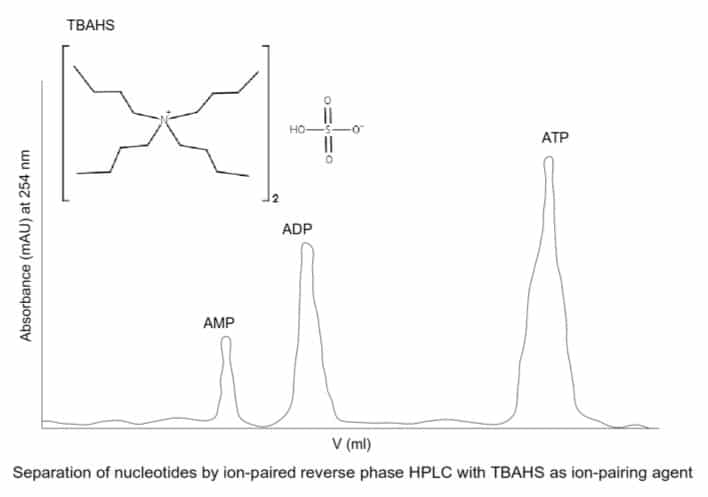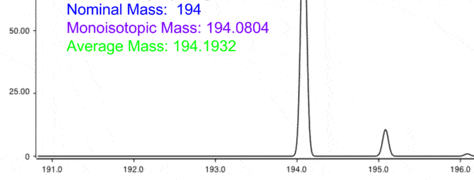In our previous articles (Thin Layer Chromatography: The basics, The many uses of thin-layer chromatography, and Troubleshooting thin layer chromatography), we read about Thin-Layer Chromatography (TLC) in detail. Though TLC is a great analytical technique to separate compound(s) from a mixture and/or identify them, it has certain limitations. One significant obstacle is that it cannot quantify the compound. This barrier can be overcome by using High-Performance Thin Layer Chromatography (HPTLC); a technique that is more like a robotic version of TLC, where manual handling is reduced, thus saving time and enhancing the accuracy and reproducibility of your results.
How HPTLC is Performed
HPTLC is not very different from TLC in terms of the underlying principle. Briefly, you apply the sample on a TLC plate and run the sample by dipping the plate in a particular solvent system. The compounds in the sample will then separate based on their polarities. The difference lies in how the experiment is performed, in that HPTLC uses a computer system connected to an auto-sampler and a scanner (and occasionally an Automatic Developing Chamber and a Chromatogram Immersion Device).
The auto-sampler spots the specified amount of your sample on the plates, after which the plates can be developed in a glass chamber or an automatic developing chamber. Once the chromatogram run is complete, the plates are dipped in the derivatization agent either manually or using a chromatogram immersion device. Alternatively, the derivatization agent can be sprayed on the plate using a Derivatizer. Finally, the compounds are quantified by scanning the plate using a scanner.
Let’s delve into each of these instruments in detail.
HPTLC Instrument Parts: How and What They Do
Auto-Sampler
The primary difference between TLC and HPTLC is the sample application part. In TLC, you would manually spot the sample on a silica plate using a capillary tube. An HPTLC auto-sampler however, is a precision instrument that applies a specified amount of sample by spraying it using nitrogen gas. Also, a computer system connected to the auto-sampler is used to feed data about the amount of sample to be applied and the number, width, and position of the bands of the samples.
Note that unlike TLC, you must filter the sample using a syringe filter before applying it on the TLC plate, or else there is a high chance that the undissolved sample or precipitate, might clog the HPTLC syringe (these syringes might cost you a pretty penny).
Developing Chamber
Usually, a rectangular glass chamber is used for developing HPTLC plates, similar to TLC. Here, you saturate the chamber for at least 20-30 minutes by pouring a solvent and covering it. You can also place a filter paper dipped in the solvent system to allow even distribution of the vapors. After saturation, you must place the plate vertically in the chamber. You must make sure that the sample spots remain above the level of the solvent.
There are two main types of vertical developing chambers viz. flat bottom chamber and a twin trough chamber (this one has a ridge at the base of the chamber dividing it into two troughs). The solvent consumption is less in twin trough chambers as compared to the flat bottom ones.
Experts who use HPTLC also recommend you to use an Automatic Developing Chamber (ADC) where the plate is immersed in a pre-saturated chamber and is conditioned there for a particular period of time and then dipped in the solvent. Just like the sample application part, this procedure is also fully automated. After the solvent front reaches a particular height, the plate is automatically removed. Thus, there is no human interference, and the results are comparatively more accurate and reliable.
Chromatogram Immersion Device and Derivatizer
For all my experiments so far, I have always used a glass chamber that holds a derivatization agent and then performed the derivatization by manually dipping the plate in it for a few seconds before pulling it out. This manual method of immersing the plate in the derivatization agent can be used for TLC as well as HTPLC, as long as the speed, and the time for which the plate is immersed in the derivatization agent is kept as constant as possible, throughout your experiments. This manual way of derivatization can be semi-automated by using a chromatogram immersion device, which immerses and withdraws the plate from the derivatization agent with uniform vertical speed and immersion time.
In contrast, the derivatizer is fully automated, where it uniformly sprays the derivatization agent on the HPTLC plate. Also, the derivatization assembly is a closed system and hence no aerosols/spraying reagents leak out. Thus, the derivatizer offers advantages such as homogeneity, accuracy, and convenience over the manual and semi-automated methods.
TLC Scanner for Chromatogram Evaluation
When you are scanning your compound for the first time, you can choose a multiwavelength scan (ranging from 190 to 900 nm) to determine the best wavelength for your compound. The best wavelength would show sharper peaks in comparison to others.
Once you have found a suitable wavelength for your compound, you can select that particular wavelength every time you scan your plate. The quantification of your compound is then only a matter of a few mouse-clicks. The quantity of the compound is directly proportional to the peak area. Just select the peak and you can obtain data for all the peaks within that Rf value. You can opt to display the data (areas) or the peaks (3D view) either individually or as an overlaid diagram. Moreover, you can even assign substance names to the peaks.
HPTLC vs HPLC
Since HPTLC is a quantitative and highly precise method of analysis, it is preferred over the less accurate and qualitative TLC. But what about when HPTLC gets in the ring with a technique of equal potential? One such widely used analytical method is high-performance liquid chromatography (HPLC). Though both HPLC and HPTLC can be used for sample separation and analysis, HPTLC shows remarkable advantages:
- Less Solvent Utilisation in HPTLC (Cost-Effective)
If you have already used HPLC, you must have noticed that the solvent is needed not only for the run but also for washing the HPLC column, thus consuming a significant amount of solvent for a single analysis. HPTLC on the other hand requires solvent only for the run and that too in a much lesser quantity. - Multiple Samples in a Single Run in HPTLC (Saves Time and Energy)
Even in automated HPLC systems, only a single sample can be analyzed in one go. Whereas, in HPTLC, almost 18-20 samples can be analyzed (depending on the length of the HPTLC plate chosen). Thus, HPTLC is not only economical but will also save a significant amount of your research time. - HPTLC Is More Sensitive Than HPLC for Certain Compounds
Few of my colleagues have experienced a better sensitivity of analysis in terms of detection with HPTLC than HPLC. One of the molecules was Vitamin D. If you are experiencing issues with sensitivity for the detection of your compound using HPLC, try using HPTLC instead. - Multiple Runs on the Same HPTLC Plate for Different Samples
If the solvent system for two or more different samples is the same, all of these samples can be run on the same plate at the same time, thus saving time and solvent cost.
Taking everything into account, HPTLC does seem to be a promising quantitative analytical method. Stay tuned for more information on the Dos and Don’ts of HPTLC in the next article in this series.






